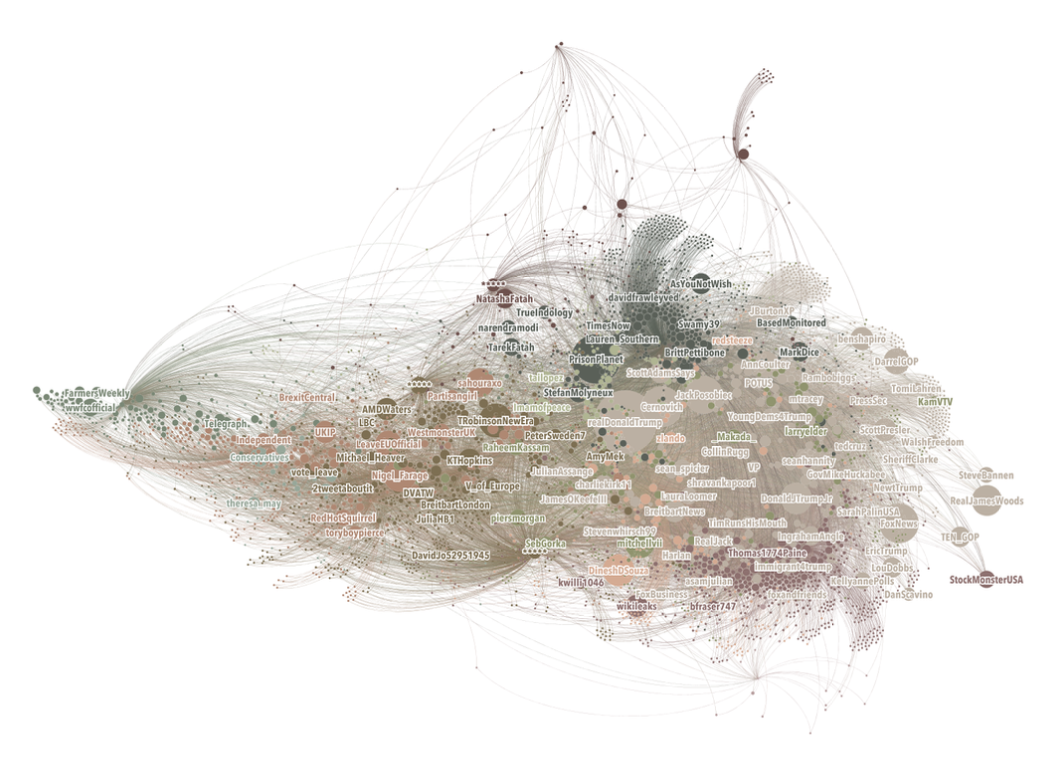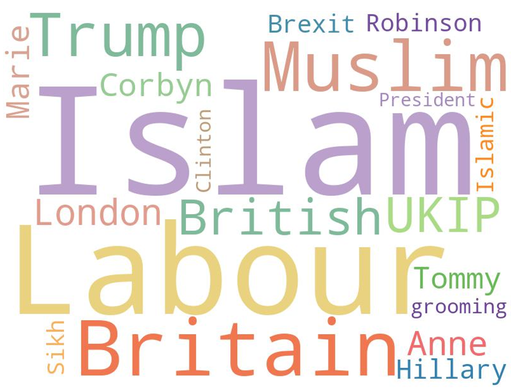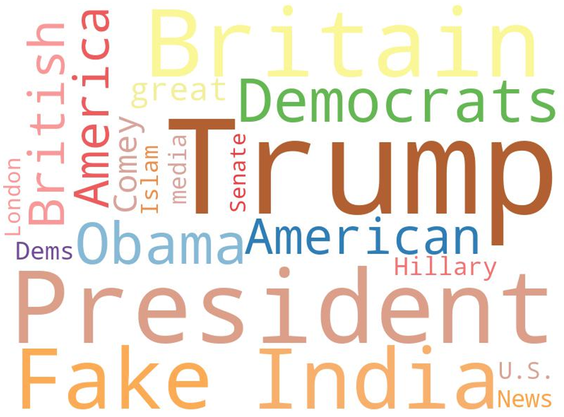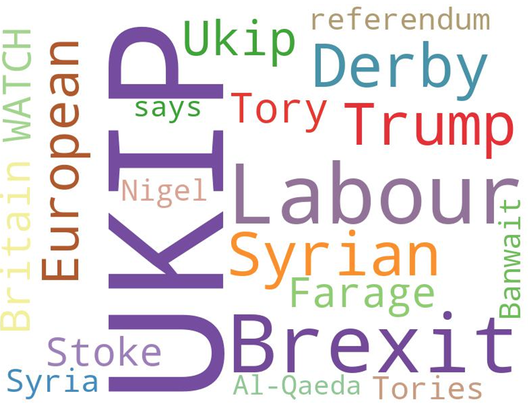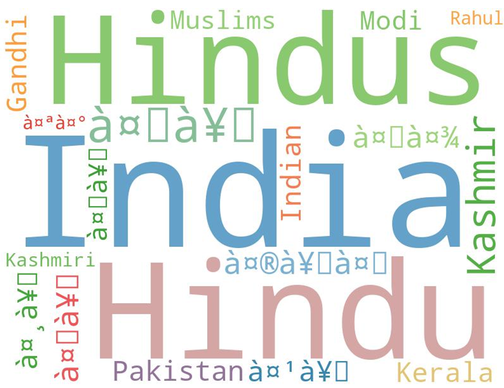By Eviane Leidig
A lacuna exists in the study of the radical right whereby researchers focus disproportionately on developments in Europe and North America. Yet, countries such as India, the Philippines, Turkey, and Brazil highlight how the radical right can operate, and indeed flourish, beyond the West. Our failure to incorporate these non-Western case studies poses a theoretical and methodological gap in our understanding of the radical right as a global phenomenon.
Studies of the radical right should not just be limited to cross-national perspectives, but additionally include transnational dynamics as a means of understanding how exclusionary tropes and narratives can be adapted across global contexts. For my PhD project at the Center for Research on Extremism (C-REX) at the University of Oslo, I set out to explore the transnational connections between the radical right in India, the UK, and the US. I was particularly interested in the ideological linkages between Hindutva (or Hindu nationalism in India) and populist radical right discourses promoted by the Brexit movement and Trump’s campaign (and later presidency).
Motivated by the role of diaspora and migrant networks in fostering radical right agendas, I initially conducted a year-long digital ethnographic study of thirty-nine Indian diaspora Twitter users who live in the UK and US and express pro-Brexit and/or pro-Trump political opinions. Early on, I found that instead of only tweeting about Brexit for UK-based users, and Trump for US-based users, in fact, nearly all of the users tweeted about both Brexit and Trump. Thus, my study was not merely comparative, but convergent in nature. Importantly, by employing a digital ethnographic approach, I could analyse how these users discuss in-depth issues of concern pertinent to the radical right (e.g. immigration, Islam, the political and media establishment) as well as explore how their interactions on the Twitter platform shaped their online (ideological and political) identities. For more on the findings of this study, see here.
In order to understand how these users are mapped onto the radical right Twitter milieu more generally, last year I held a visiting PhD researcher position at the Oxford Internet Institute, courtesy of VOX-Pol’s Researcher Mobility Programme. Along with my co-author Bharath Ganesh and supervisor Jonathan Bright (who was involved in the project but not the findings discussed below), we sought to explore the levels of transnationalism of this group of Indian diaspora Twitter users.
In order to map the network, we extracted all the tweets from the 39 Twitter users that I had selected. My co-author and I found that of the 185,580 tweets, 102,606 (55%) were retweets of others. As this is the majority of their activity, we used network analysis techniques to visualise and explore transnationality in terms of who they retweet. To make the network in the graph below, each retweet from one of the users in the seed is represented as a directed edge that points to a user. We visualised a representation of who is retweeted the most by these 39 Twitter users, and deployed some basic metrics to get a better understanding of whether or not the convergence I observed earlier can also be found in this network.
Based on the retweets of these Indian diaspora users, we found that the top 20 Twitter accounts retweeted were as follows:
| TABLE 1. TOP 20 USERS RETWEETED BY SEED ACCOUNTS | |
| USER | RETWEETS |
| 1. realDonaldTrump | 6,127 |
| 2. PrisonPlanet | 2,060 |
| 3. Cernovich | 1,291 |
| 4. FoxNews | 1,228 |
| 5. JackPosobiec | 1,088 |
| 6. TRobinsonNewEra | 882 |
| 7. Nigel_Farage | 841 |
| 8. DineshDSouza | 770 |
| 9. DonaldJTrumpJr | 717 |
| 10. RealJamesWoods | 706 |
| 11. mitchellvii | 701 |
| 12. sahouraxo | 618 |
| 13. LeaveEUOfficial | 541 |
| 14. DarrelGOP | 514 |
| 15. AnnCoulter | 505 |
| 16. KTHopkins | 409 |
| 17. ScottPresler | 402 |
| 18. benshapiro | 401 |
| 19. AMDWaters | 376 |
| 20. wikileaks | 375 |
Clearly, Trump’s official Twitter handle is disproportionately retweeted by this seed set. It simultaneously provides insight into which Twitter accounts tend to absorb the attention of this set of diaspora users. What this highlights is that these Indian diaspora users make a clear effort to embed themselves within the British and American radical right Twitter network.
Using a modularity class algorithm, which identifies subcommunities in a network based on their connectivity to one another (Blondel et al., 2008), we identified twelve main segments of these Indian diaspora users and the people that they retweet. The network graph below visualises this and labels users that were retweeted at least 120 times by users in our seed. In the network graph, each node represents a Twitter user, with the size of the node dependent on retweets. Each line or “edge” in the graph represents a retweet of by one of the users in our seed. Donald Trump, with 6,127 retweets is the biggest node and has the most incoming edges in the graph.
Figure 1: Network graph of twelve main communities. Account handles designated with ***** are to protect identities of Indian diaspora users
The network visualistion can be compared with the table of users broken down into the twelve communities.
| Community | Percent of total nodes in this community | Top 5 Nodes by In-degree (number of times retweeted by users in the seed) | Top 5 Nodes by eigenvector centrality (a measure of influential nodes within a network) | Number of retweets from users within the seed going outside of this community | Number of retweets from users within the seed staying within this community |
| 1 | 0.17 | TRobinsonNewEra; KTHopkins; AMDWaters; Anish_Patel3107; V_of_Europe | V_of_Europe; TRobinsonNewEra; PeterSweden7; KTHopkins; AmyMek | 3353 | 9877 |
| 2 | 0.06 | mitchellvii; piersmorgan; RaheemKassam; _Makada_; SebGorka | piersmorgan; mitchellvii; _Makada_; KamVTV; DRUDGE_REPORT | 3459 | 3028 |
| 3 | 0.13 | realDonaldTrump; Cernovich; FoxNews; JackPosobiec; DonaldJTrumpJr | realDonaldTrump; FoxNews; Cernovich; RealJamesWoods; AnnCoulter | 5442 | 21406 |
| 4 | 0.04 | DineshDSouza; zlando; redsteeze; The_Trump_Train; jihadwatchRS | DineshDSouza; The_Trump_Train; mikandynothem; getongab; Liz_Wheeler | 3160 | 1953 |
| 5 | 0.04 | NatashaFatah; sciencerocks156; SocietySikhi; indianoutreach; iamshalabhkumar | ABC; NatashaFatah; IndiaToday; IndianExpress; sciencerocks156 | 398 | 2520 |
| 6 | 0.12 | wwfcofficial; WBG_Agriculture; CIMMYT; Telegraph; FarmersWeekly | CBSNews; Reuters; nytimes; BBCBreaking; BBCNews | 817 | 7433 |
| 7 | 0.01 | Conservatives; theresa_may; CCHQPress; BorisJohnson; Number10gov | Conservatives; theresa_may; amritabhinder; BorisJohnson; CCHQPress | 244 | 1036 |
| 8 | 0.11 | Nigel_Farage; sahouraxo; LeaveEUOfficial; UKIP; WestmonsterUK | Nigel_Farage; sahouraxo; WestmonsterUK; LeaveEUOfficial; JackBMontgomery | 2347 | 8203 |
| 9 | 0.12 | PrisonPlanet; AsYouNotWish; StefanMolyneux; MarkDice; TarekFatah | PrisonPlanet; MarkDice; TarekFatah; StefanMolyneux; PamelaGeller | 3184 | 7931 |
| 10 | 0.06 | Imamofpeace; GrantCardone; AJA_Cortes; IntThings; RobinSharma | Imamofpeace; KurtSchlichter; RitaPanahi; netanyahu; RubinReport | 1794 | 4966 |
| 11 | 0.13 | wikileaks; StockMonsterUSA; kwilli1046; Thomas1774Paine; bfraser747 | Thomas1774Paine; StockMonsterUSA; kwilli1046; wikileaks; jojoh888 | 3848 | 5817 |
| 12 | 0.01 | MIGOP; GOPChairwoman; UMichFootball; ABTS10; yrnf | FoxNewsResearch; GOPChairwoman; FDRLST; theblaze; freep | 48 | 342 |
| Table 2. In this table, we display each community, the percent of all nodes that belong within it, the top five users in each community by in-degree centrality (here, number of times retweeted) and eigenvector centrality, and the number of retweets from users within the seed that belong to that community going out of that community and those that stayed within it. | |||||
Five of these communities are worth reflecting on further.
Community 1 are Indian diaspora accounts based in the UK and is clustered around the accounts in the community with the highest eigenvector centrality scores: @V_of_Europe, @TRobinsonNewEra, @PeterSweden7, @KTHopkins, and @AmyMek (displayed in the middle of the network graph). We conceptualise this community as composed of the counter-jihad and anti-Sharia network. Key figures such as grassroots campaigner Tommy Robinson (whose account has now been removed by Twitter) and columnist Katie Hopkins are prominent voices in addressing the ‘Eurabia’ and ‘Islamisation’ theories whereby Muslims are alleged to be intent on spreading jihad by virtue of demographic warfare in order to eventually install an Islamic caliphate in the West.
The following figure depicts a word cloud for this community retweeted by Indian diaspora users. The words visualised are key words, calculated by examining the distribution of words used in all tweets from one community of users against all of the words used in all of the tweets collected. Keywords that are displayed in the word clouds are determined to be keywords based on a chi-square test that identifies the words that are most specific to that community. In other words, we measured the most prominent words used by this community of users based on their tweets and retweets.
Figure 2: Word cloud of Community 1
As the word cloud illustrates above, most of the words used by these accounts refer to the British context. This is unsurprising given that these accounts are UK-based. Based on my previous digital ethnography of these users, I also found that this community discussed Islam as a primary issue of concern, often in relation to the Labour Party, who are viewed in favour of multiculturalism that affords the entry of allegedly threatening Muslims into the UK and/or accommodating the British Muslim community as an integration policy agenda. This grievance was highlighted through several examples of so-called ‘Muslim grooming gangs’ who had targeted Hindu and Sikh girls, but was overlooked due to the leftist orientation, or ‘political correctness’, of the political and media establishment seeking to ‘appease’ Muslims in order to avoid communal tensions.
Community 3 are Indian diaspora accounts based in the US and is clustered around Twitter accounts based in the US, with the top five most influential accounts including @realDonaldTrump, @FoxNews, @Cernovich, @RealJamesWoods, and @AnnCoulter (displayed to the right of the network graph). As indicated in the network graph, Trump’s account is the central node across all the communities. I term this the Trump effect, whereby the President’s tweets shape tropes and narratives within this apparatus of media commentators sympathetic towards the administration’s agenda.
Figure 3: Word cloud of Community 3
Interestingly, the word cloud of this community highlights that countries such as Britain and India are prominently referenced by users, thus indicating that these users are uniquely transnationally oriented within an otherwise US-centric cluster. This compliments the findings from my digital ethnography, in which these users were very active in tweeting about American politics, but simultaneously concerned about Brexit developments and political issues in India. This can be attributed to the fact that these users are first-generation immigrants, as opposed to second- or third-generation immigrants, and thus orientated themselves towards global geopolitics.
Community 8 are Indian diaspora accounts based in the UK and is clustered around the accounts with the top 5 eigenvector centrality values that include @Nigel_Farage, @sahouraxo, @WestmonsterUK, @LeaveEUOfficial, and @JackBMontgomery (displayed in the middle of the network graph). I designate this community as composed of Leave campaigners advocating a ‘hard Brexit’ model.
Figure 4: Word cloud of Community 8
The prominence of UKIP in this word cloud of users should not be confused with UKIP as a node in the network graph. In this instance, UKIP is a frequent word in the tweets, whereas UKIP as a node is about who retweeted the party’s official Twitter account. Hence, the users in this community prefer discussing UKIP rather than retweeting the account. This is an interesting finding when compared to results of the digital ethnography, in which I found that many of the users of this community had previously been UKIP candidates in local elections but have since defected to the Conservatives. They no longer identified with UKIP’s party platform, especially after Nigel Farage’s leadership departure, and instead sought political opportunities in other avenues.
Community 9 is composed of Indian diaspora accounts based in the US, who are the most extreme ideologically, and often tweet pro-Hindutva content. This community’s top 5 accounts by influence include alt-right personalities @PrisonPlanet, @MarkDice, @StefanMolyneux, and counter-jihad activists @TarekFatah and @PamelaGeller (displayed in the top-middle of the network graph). This community of users poses the most interesting relationship in displaying the ideological similarities between Hindutva and the Anglo-American alt-right/counter-jihad activists.
Figure 5: Word cloud of Community 9. Note: symbols refer to Hindi words which are not supported in the Python tool used to visualize keywords
The word cloud for this community is disproportionately centred on India, Hindu/s, and references to Prime Minister Narendra Modi, as well as South Asia more generally. Yet, the most influential accounts in this community are UK and North America-based. When combined with the digital ethnographic findings, I term these Indian diaspora users translators, as they fuse Hindutva ideology into Western radical right networks. Here, it is not just long-distance nationalism between the diaspora and India that characterises Hindutva, but how these users help bridge a shared ideological commitment to exclusionary nationalism in Western societies.
Community 11 are Indian diaspora accounts primarily based in the US and is clustered around the top 5 accounts by influence that include @Thomas1774Paine, @StockMonsterUSA, @kwilli1046, @wikileaks, and @jojoh888 (displayed in the bottom-right of the network graph). I conceptualise this community as the conspiracy network, given the prominence of the top 5 accounts by eigenvector centrality in promoting the circulation of conspiratorial information.
Figure 6: Word cloud of Community 11
The word cloud of this community focuses on sensationalised stories surrounding the Hilary Clinton email archive posted on the Wikileaks website, and related conspiracies connected to Obama, John Podesta, and Huma Abedin. When analysed in conjunction with digital ethnography, I found that these users rely heavily on visual and aesthetic representations in the forms of memes and YouTube videos, as well as clickbait headlines, to spread viral information. Interestingly, these account users are dominated by organisations rather than individuals.
Overall, two main findings emerge from mapping the Twitter network of these selected Indian diaspora users.
First, these Indian diaspora users are very much embedded in the multi-cluster radical right Twitter network. They help perpetuate and circulate tropes and narratives of the radical right rather than remaining on the fringe of activity. This was indicated in the digital ethnography I undertook prior to the quantitative mapping of these users. By immersing myself in the daily interactions of these users, I could explore how users constructed their online identities. But this network graph developed by my co-author complements my previous findings by highlighting the various and differentiated clusters in which these users position themselves. This research overall sheds light on how such discursive practices amongst Indian diasporic individuals adds complexity in their support for radical right agendas in the West.
Second, the network structure is useful in allowing us trace geographies of exchange. We sought to explore if these communities are largely self-contained clusters, e.g. echo chambers, or greatly connected to other communities. Based on our findings, the third community stands out for being less an echo chamber as it occupies the centre of the network, and its users seem to absorb retweets from all the communities (approximately 1/3 of retweets of all communities). In short, the Trump effect remains strong for this seed of users.
Lastly, despite Indian diaspora users confined to national contexts within communities, the most influential accounts (measured by eigenvector centrality) within these communities are mostly cross-national. Thus, rather than conceptualising the radical right Twitter milieu according to national boundaries, we encourage researchers of the radical right to instead explore the ideological fragmentation of these networks, and the issues that traverse across Twitter interactions.
Eviane Leidig is a PhD Research Fellow at the Center for Research on Extremism (C-REX) at the University of Oslo, and Head of the Early Career Researcher Network at the Centre for Analysis of the Radical Right. The research reported on above was carried out at the Oxford Internet Institute with Dr. Bharath Ganesh and supervised by Dr. Jonathan Bright as part of VOX-Pol’s Researcher Mobility Programme. You can follow her on Twitter: @evianeleidig

